Did the Haunting Landscape of Scotland’s Isle of Jura Inspire the Despair of Nineteen Eighty-Four?
The dining room was empty save for me, a plate of steaming venison pie, and a chubby waiter. As I chomped the chewy deer the waiter fidgeted with cutlery and waddled between tables like a boat bashed between two waves. He hummed to himself as he set places for patrons who would never come and cleaned tables that were already spotless.
We didn’t speak to each other or pay one another much attention. He cleaned, I chewed—that was our evening. The bar in front of me was untouched—all the liquor bottles were full, the beer taps bone dry, and the cash register flashed a lonely zero. No radio played, no television flickered, no cars sounded outside, and no voices could be heard. Only the radiator twanged occasionally.
I was the only guest in the only hotel on the island. I couldn’t have planned the trip any better.
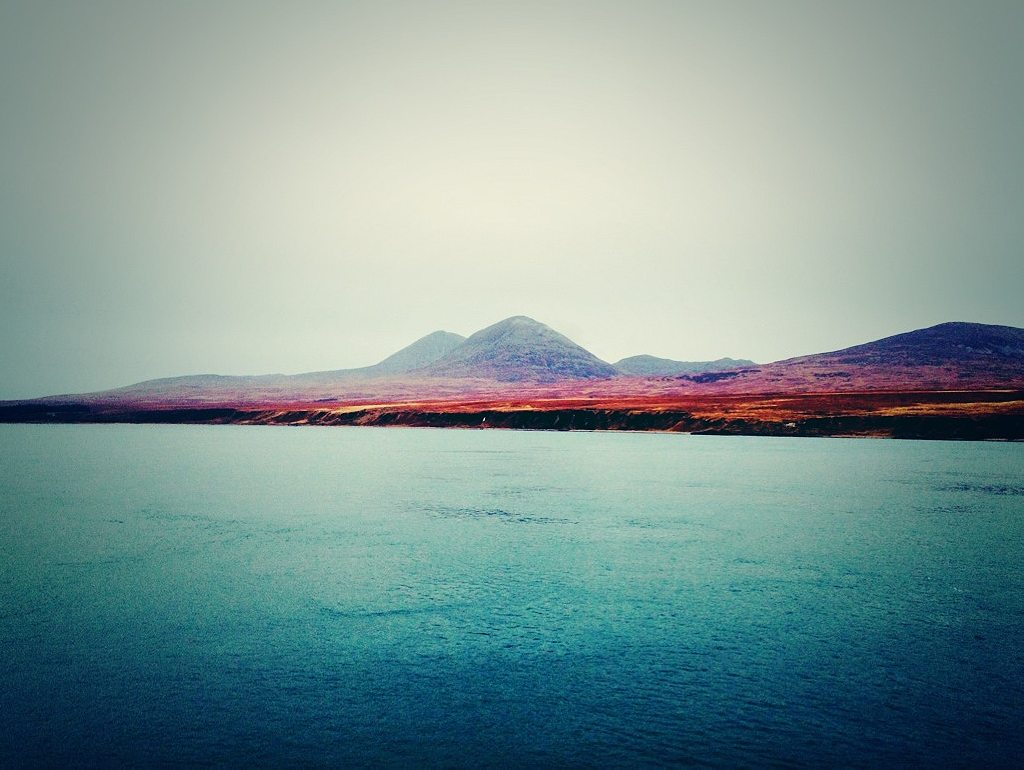
I had come to Jura, a remote island on Scotland’s west coast, to find the solitude George Orwell had sought 65 years earlier to finish his classic, Nineteen Eighty-Four. Having been brought up in the Scottish countryside myself and subjected to both its unconscionable boredom and inexplicable beauty, I was interested to find out why a writer, who according to biographer Jeffery Meyers “hated Scotland”, chose to live in the part of the country most essential to its identity-the Highlands. I also wanted to understand why a man so accustomed to city life had come to an inaccessible island of only 190 souls to find inspiration for a novel about totalitarianism in an urbanised state—why a writer at the peak of his celebrity ensconced himself in an austere farmhouse hidden in an inhospitable Scottish landscape.
Orwell first visited the island in September 1945, on the recommendation of David Astor, his editor at the Observer newspaper, who had suggested he go there for the solitude and detachment it would offer. The following April, Orwell came to live on Jura, settling at Barnhill, a remote farmhouse at the northern end of the island.
The death of his wife Eileen O’Shaughnessy during surgery in March 1945 and the success of Animal Farm that same year had left Orwell with a peculiar mix of despair and triumph. He’d gained an international reputation and a small amount of money (his lifetime earnings from the book amounting to some £12,000) but lost a wife he confessed to have treated poorly throughout their union. During this period, as a result of what his biographer D.J Taylor called his “habitual ingenuousness with the opposite sex,” Orwell made a chain of unsuccessful marriage proposals to a series of younger women, some he barely knew and most of whom did not find him the least bit attractive.
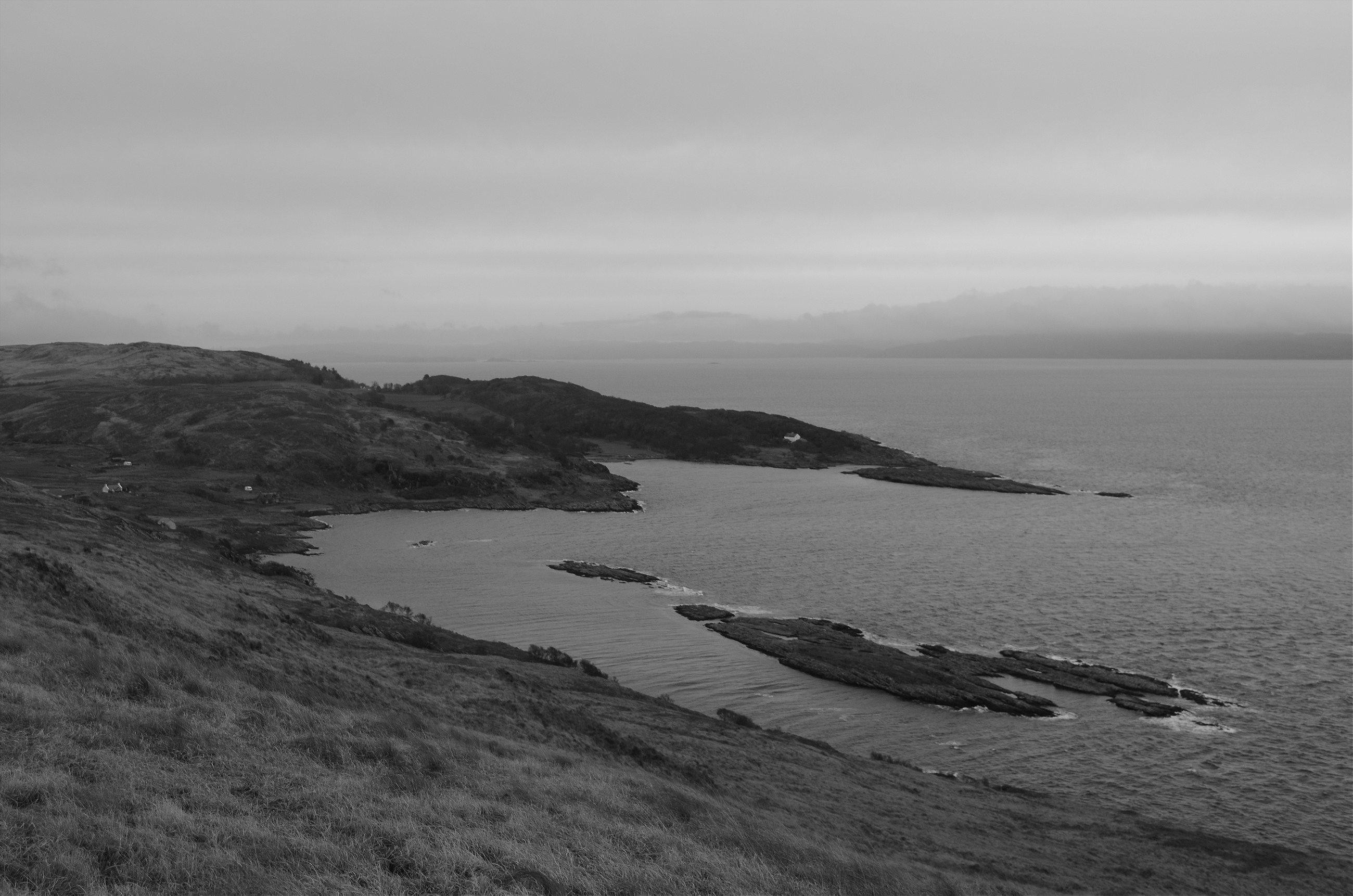
The emotional confusion under which he labored is communicated by the quantity of work he produced at the time. Following O’Shaughnessy’s death he published some 130 essays—one article every two to three days. The work was of Orwell’s own making, but still he complained of relentless deadlines and other obligations. “I am anxious to get out of London for my own sake because I am constantly smothered under journalism,” he wrote to friends. For Orwell, Jura was likely an escape from both professional success and personal misery.
He surely didn’t move to the island for health reasons. Orwell’s friends described him as “frightfully tired and frail,” and the wild Isle of Jura, with its staggering isolation, inclement weather, and harsh living conditions, did not present an ideal healing environment for the gaunt writer with an unshakeable cough. (A year later, Orwell would be diagnosed with tuberculosis.)
Perhaps the move was indicative of something deeper and more fundamental to his character. In Taylor’s biography, one of Orwell’s friends is quoted as saying that the writer “could thrive only in comparative adversity.” Jura would have provided just the adversity he sought.
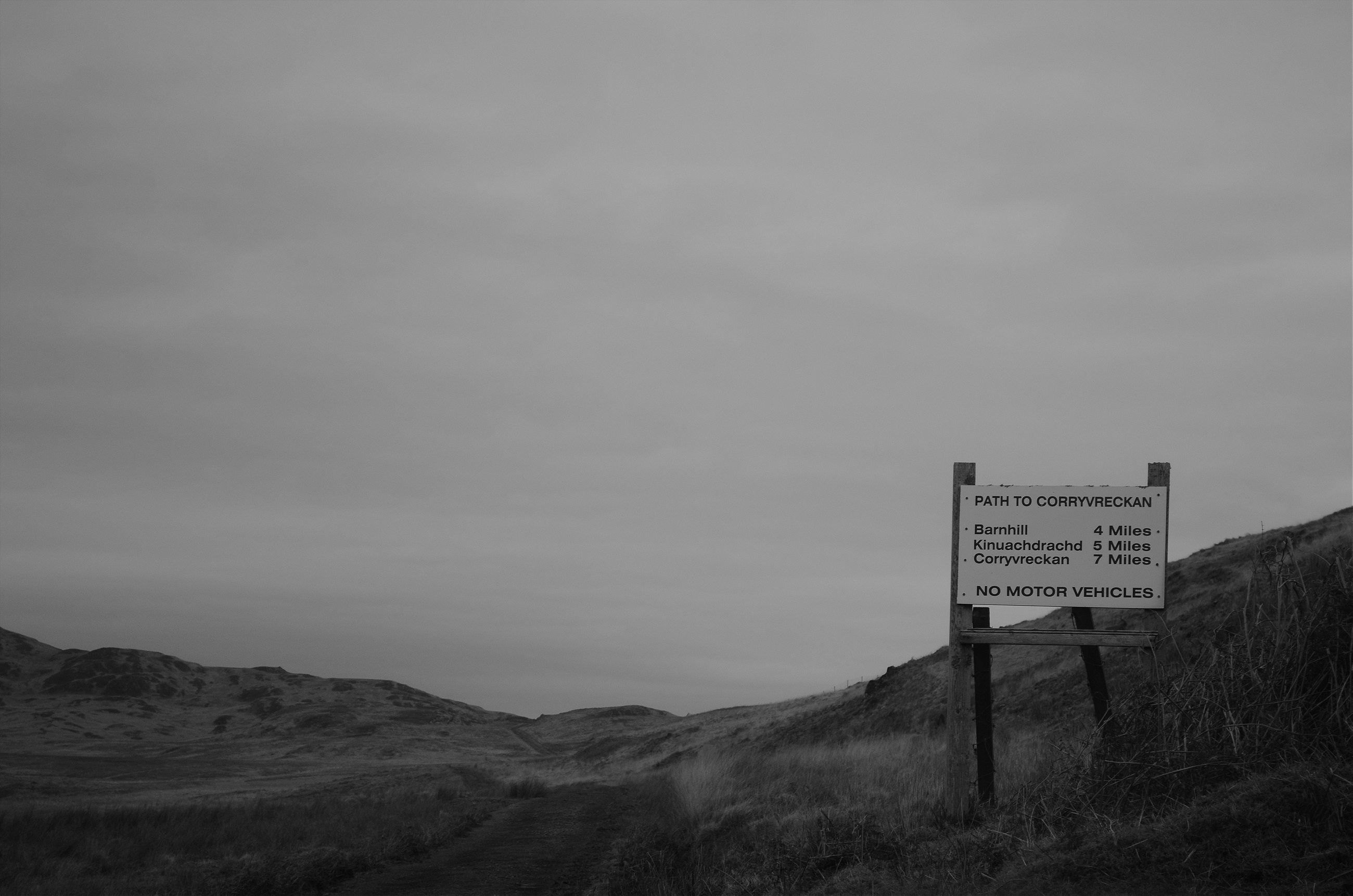
The next morning, holding a cup of tea and a battered Orwell biography, I sat on a bench outside the hotel and took in the view and the crisp air. I listened to the whisper of the waves and the squelch of sheep’s hooves in the nearby fields. Out ahead the contours of Jura slouched into the distance and the sky looked thick and heavy with rain.
The Paps, the island’s highest mountains, lurched precariously over the white houses on the other side of the bay. During Orwell’s time on the island he was known by his given name, Eric Blair, and he felt close to the islanders in disposition and personality—simple and hardworking. But due to his clipped English accent and elite Eton education, many of Jura’s residents found him aloof and aristocratic. Others, as Bernard Crick, another of Orwell’s biographers (apparently it takes a village to analyse a man of Orwell’s stature), notes, looked upon such indifference more kindly, seeing little more than “a man who kept to himself and interfered with no one.”
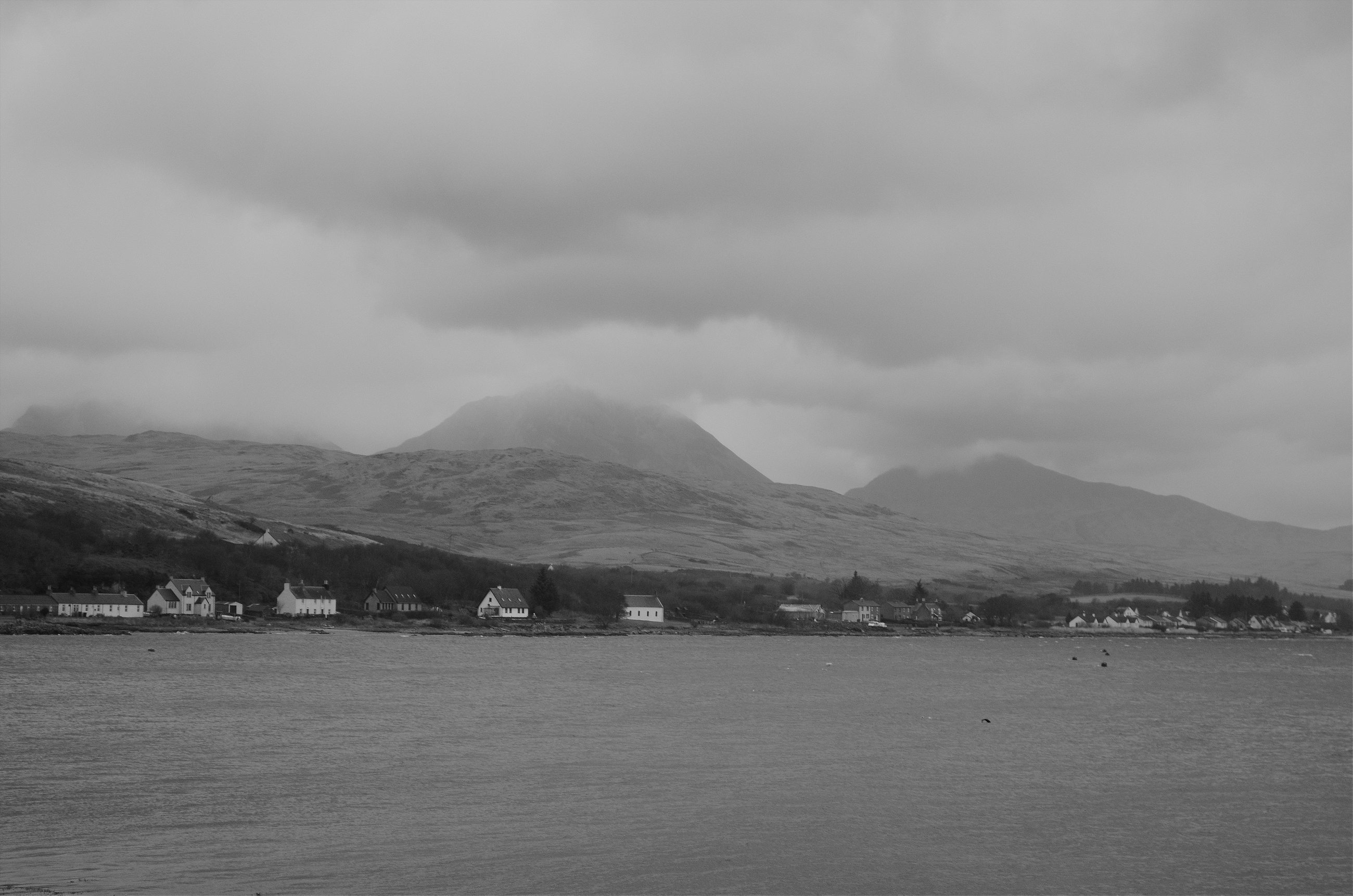
That morning I decided to travel to Barnhill, to Orwell’s old home on the northeast edge of the island. One of the hotel staff told me it was a 23-mile trek, five of which would need to be completed on foot. I was also warned that the 18 miles of road would be “tough, deer strewn, and slow,” and that it was best to drive with caution.
The warning proved correct. The road was a winding mess of crumbling asphalt. It was also extremely narrow, and unlike many of the other single-track roads on in the island’s west coast, there was very little room for oncoming traffic. I traveled around hidden bays, through dripping forests, past sludgy fields and inland lakes. When I finally reached the abandoned quarry that signaled the end of the road, mine was the only car there. I donned my waterproofs, pulled on my boots, and set off up the rutted path into fog.
The view was dominated by rolling, whisky-colored hills spotted with black granite rocks. Blanket bogs saturated the ground and wind whipped through sodden grass. I moved slowly. The mud sucked and gurgled underneath my boots, the rain beat down on my jacket, and the path wound and coiled up ahead. Deer chewed on clumps of grass and goggled at me dully as I walked by.
TO MAKE A CALL THE WRITER HAD TO TRAVEL 18 MILES, NORMALLY ON HIS RICKETY AND UNRELIABLE WORLD WAR II MOPED
The deer’s presence didn’t make me feel any less alone, and nor could I imagine they alleviated Orwell’s solitude. While living on Jura, he only received posts twice a week. There was also no phone on the Ardlussa estate, on which Orwell’s farmhouse stood, and so to make a call the writer had to travel 18 miles, normally on his rickety and unreliable World War II moped, to the village of Craighouse. Not that this bothered him: the whole point of escaping to Jura was so that he could not be reached by telephone. The farmhouse was spare and barely warmed by kerosene heaters and for comfort Orwell had only his typewriter and the few friends who visited. According to Tim Turner, a builder and member of the team involved in maintaining the cottage, the writer is thought to have slept with a gun under his bed.
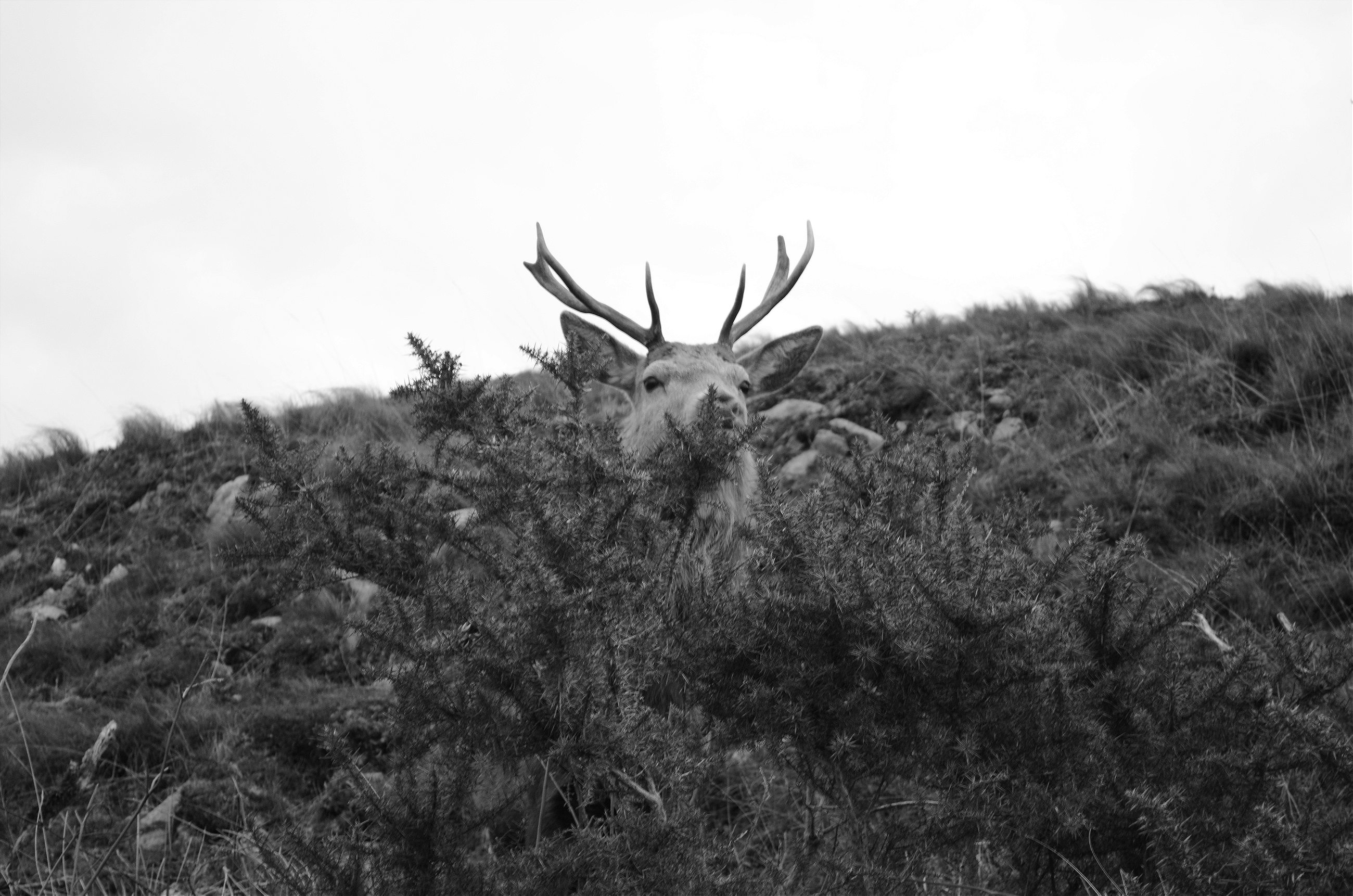
Finally, I reached Barnhill. Or at least I thought this was Barnhill. The long white structure, with its austere outbuildings, looked the same as the photos I had seen, but there were no signs, no tourist information points, and no people. I stood there for a few minutes unsure of what to do. I took a few photographs, walked around, looked inside various windows and knocked on various doors.
It was all a bit of an anti-climax and I felt somewhat ridiculous for having come all that way just to stand next to something I wasn’t especially capable of understanding. I thought of the Japanese professor who, as Rob Fletcher, a member of the family that owns the Barnhill estate, told me, walked the five mile road in the pouring rain dressed in a top hat and tails—a trip worthy of the “venerable Orwell,” he reportedly said upon on his arrival.
But before long I started to appreciate that this tourist site was not really a tourist site at all. There were no signs or ticket booths, no flashing Nikons or sweaty queues. The Barnhill of today is the same as it was when Orwell lived in it— as isolated and “un-get-at-able” as it ever was.

As I trudged back along the path to the car I thought about the effects that his time on Jura might have had on his writing. How was the island manifest in Nineteen Eighty-Four? While on Jura Orwell remained in contact with the outside word; he hosted guests and received weekly correspondences from his editors and literary friends. From them he would have learned of the dramatic changes of post-war Europe and of the wider world. Yet his day-to-day life was circumscribed by the narrow realities of Jura—the implacable north Atlantic wind through his chimney, the thrashing waves outside his window, and the indistinguishable aesthetic of one day from another. Combined, this all would have dissolved a sense of time’s progress.
PERHAPS THE BIGGEST IMPACT THAT ORWELL’S STAY ON JURA HAD ON NINETEEN EIGHTY-FOUR WAS THAT HE WAS CONSTANTLY SURROUNDED BY DEATH’S SHADOW
Having lived in similar conditions during my youth—where the unrelenting light of the Scottish summer can stretch days into eternity—I know how isolation can impact our view of the outside world. News of the rapidly transforming world must have impacted Orwell very differently than it would have had he remained in London. It is a contrast easily identified in the novel, in which the appearance of a changing and progressive world is an illusion. In the end, nothing changes.
Perhaps the biggest impact that Orwell’s stay on Jura had on Nineteen Eight-Four was that he was constantly surrounded by death’s shadow. Orwell had initially gone to Jura to escape the memory of his wife’s passing, and upon his arrival was almost immediately confronted with his own mortality. Indeed, for much of his time on Jura he suffered from a serious TB infection that left him bedridden and in and out of consciousness for weeks on end. The delirium and disorientation of Orwell’s malaise, DJ Taylor argues, created the feverish intensity of the novel. Every word he wrote of Nineteen Eighty-Four was, in essence, at the cost of his life.
Inevitable ruin haunts Orwell’s book because it’s what lurked around his writing desk at the edge of this island.
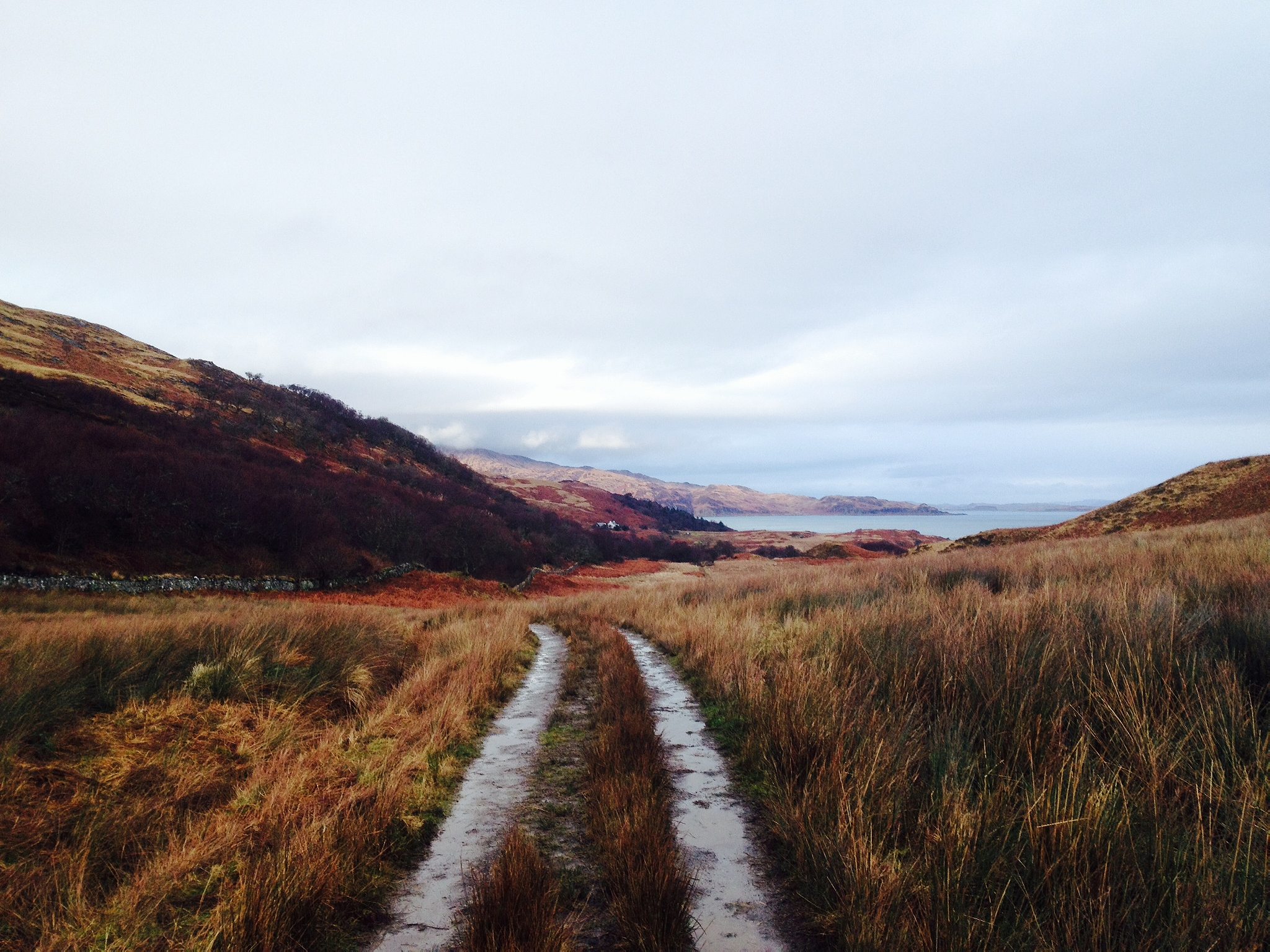
As I reached the car I saw a Land Rover driving towards me, its lights illuminating the hills up ahead. I realized I hadn’t seen or heard another human being for over 10 hours. I had almost stopped expecting to see one.
Reality was indeed as evasive here as it was in Oceania.